Kenya is a multifaceted country filled with the kind of outdoor adventures that dreams are made of. In this stunning place, you can feel the rush of adrenaline while coming face to face with predators, sleep under the stars in the wild, acquaint yourself with proud local cultures, and experience sunny, history-rich islands along the coast. From the bush to the beach, here are three destinations in Kenya that you’ll never forget.

From Bush to Beach: The Perfect Week in Kenya
Laikipia, Kenya
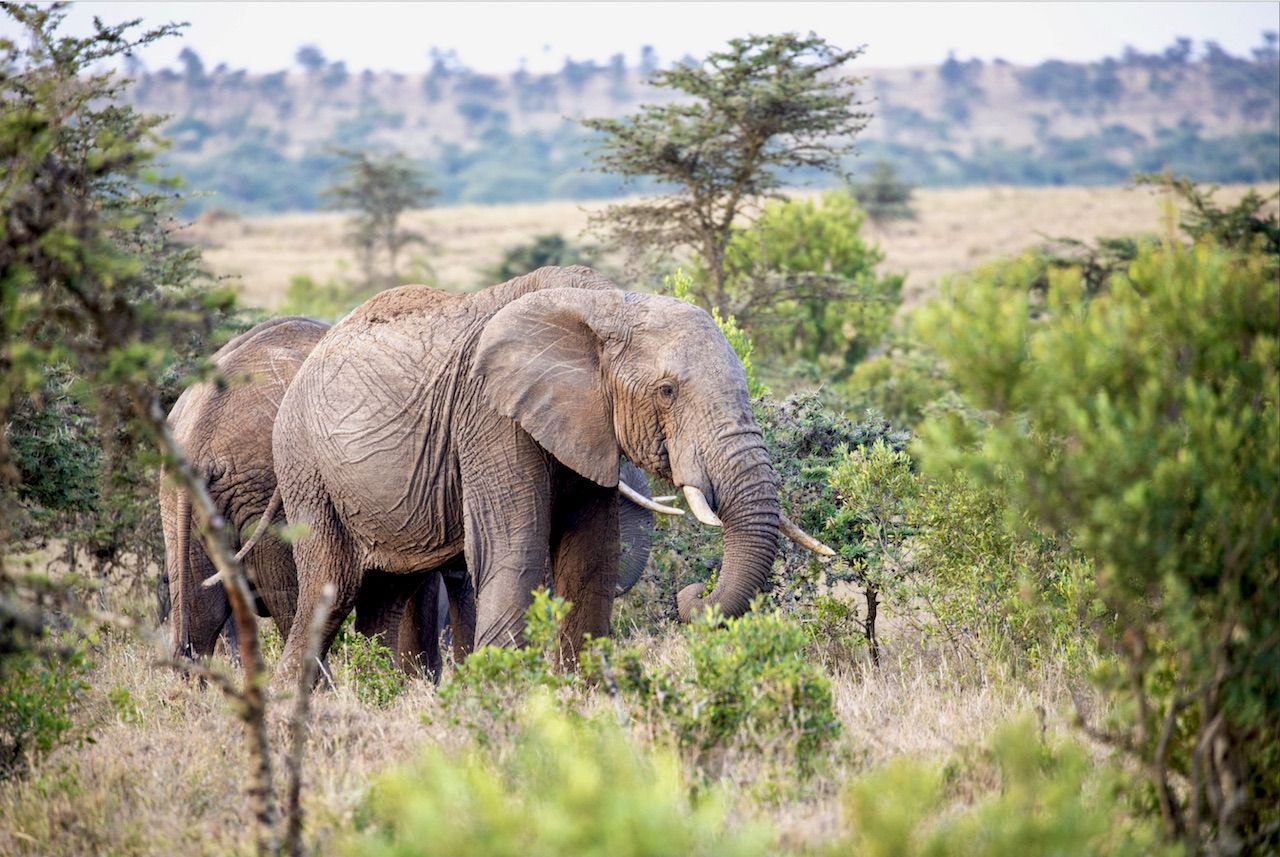
Wendy Hu
Laikipia is making its way up the ranks as one of Kenya’s prime ecotourist hotspots. This truly wild and backcountry corner of Kenya stretches from the foothills of Mount Kenya to the edge of the Great Rift Valley. Laikipia is made up of 12 conservancies, or private wildlife reserves, and a variety of ranches, some of which practice integrated land management, serving as home to both cattle and wild animals.
These areas are not just home to the famed “Big Five” — lion, leopard, rhinoceros, elephant, and Cape buffalo — but also to endangered species like the Grévy’s Zebra, African Wild Dog, and the Sitatunga Antelope. Here you will find the second largest population of elephants in Kenya and over half of Kenya’s black rhino population. Oi Pejeta Conservancy is home to the last living Northern White Rhino.
In contrast to Kenya’s popular national parks, Laikipia sees far fewer crowds, which means oftentimes there won’t be another vehicle in sight while you’re on your safari. Beyond mesmerizing landscapes and impressive wildlife numbers, Lakipia is home to tribal communities of the Samburu, Ilaikipiak, and Mukogodo Maasai tribes, who also benefit from Laikipia’s safari tourism through community conservancy.
Where to Stay in Laikipia, Kenya: An eco-friendly choice
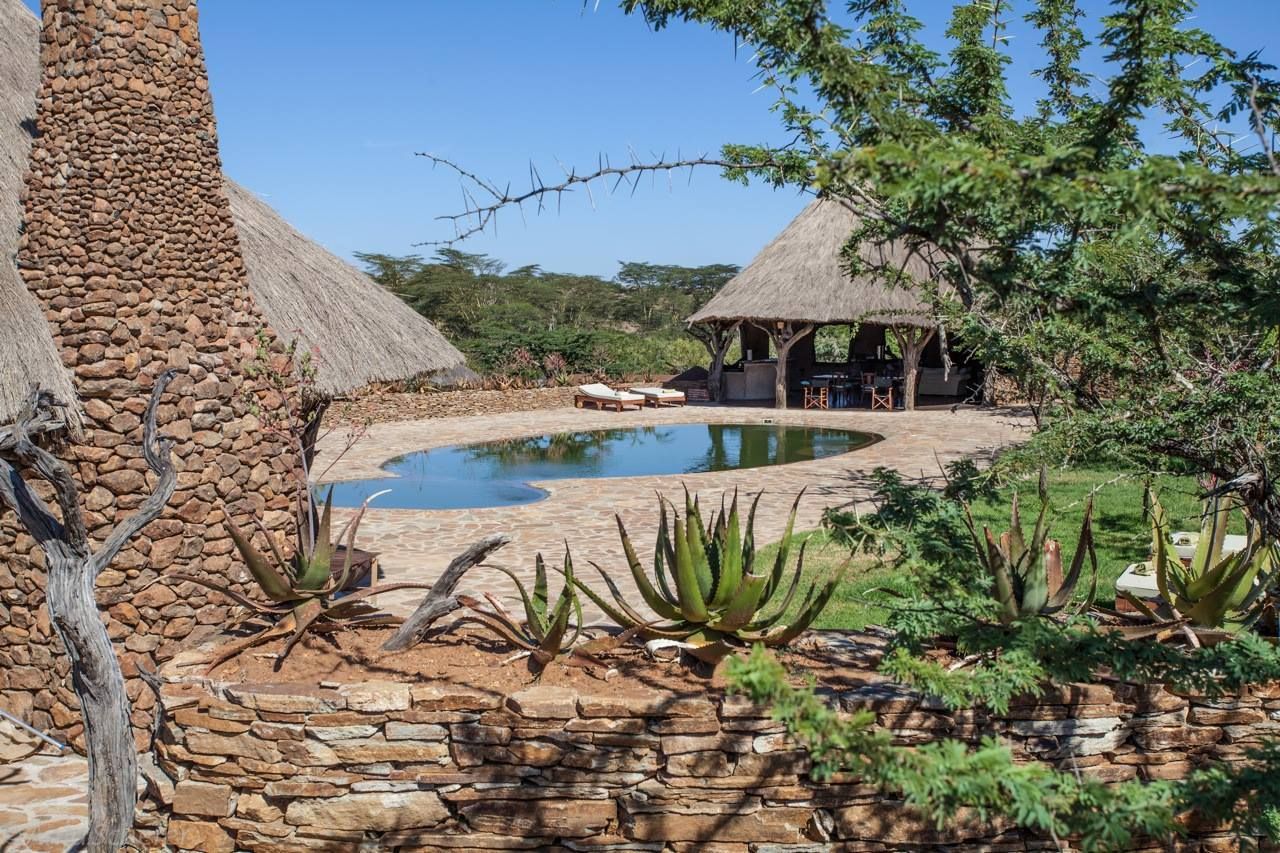
Photo: El Karama Lodge/Facebook
I was lucky enough to stay in El Karama Lodge, an off-the-grid destination far from the typical Kenyan safari crowds. The private, family-owned lodge serves the traveler seeking eco-friendly, tailor-made experiences. With 14,000 acres of private land, solitude isn’t hard to come by here. The property consists of eight cottages total, among them a family cottage (also known as the Hobbit House), four ensuite “bandas” with private river view verandas, and two secluded, luxurious cottages right on the riverbank.
All the food on the property is sourced from the organic garden or local communities, offering a farm-to-fork experience. You can tour the homestead and learn about its daily operations and see exactly where your food is coming from.
If you are traveling as a family, there’s plenty to keep the little explorers entertained. Bush school offers children developed activities such as wildlife tracking and plaster casts, clay sculpting, beadwork, safari passport games, and so much more. Older children can participate in cooking lessons, horse riding, lion predator profiling, and wildlife monitoring using camera traps. After a long day of safari adventures, adults can wind down with a rejuvenating spa experience.
Best experiences in Laikipia, Kenya

Wendy Hu
Because the El Karama is a private property, both daytime and nighttime game drives are permissible. I found there’s nothing quite like the thrill of being in the bush in the stillness of night, spotting nocturnal animals like aardvark and white-tailed mongoose; even the hippos, which stay mostly hidden during the day, come out at night.
One of Kenya’s best safari experiences is getting up-close and personal on a bush walk. These guided nature walks on the game reserve or conservancy let you experience the area in a more natural way. After your walking adventure, you can arrange an intimate picnic outdoors, where a tasty spread is prepared before you to enjoy amidst the beauty of nature.
At El Karama, you can also book a fly-camping experience, where you can sleep under a blanket of stars and be treated to a delicious dinner and breakfast cooked on an open fire out in the bush.
Maasai Mara, Kenya
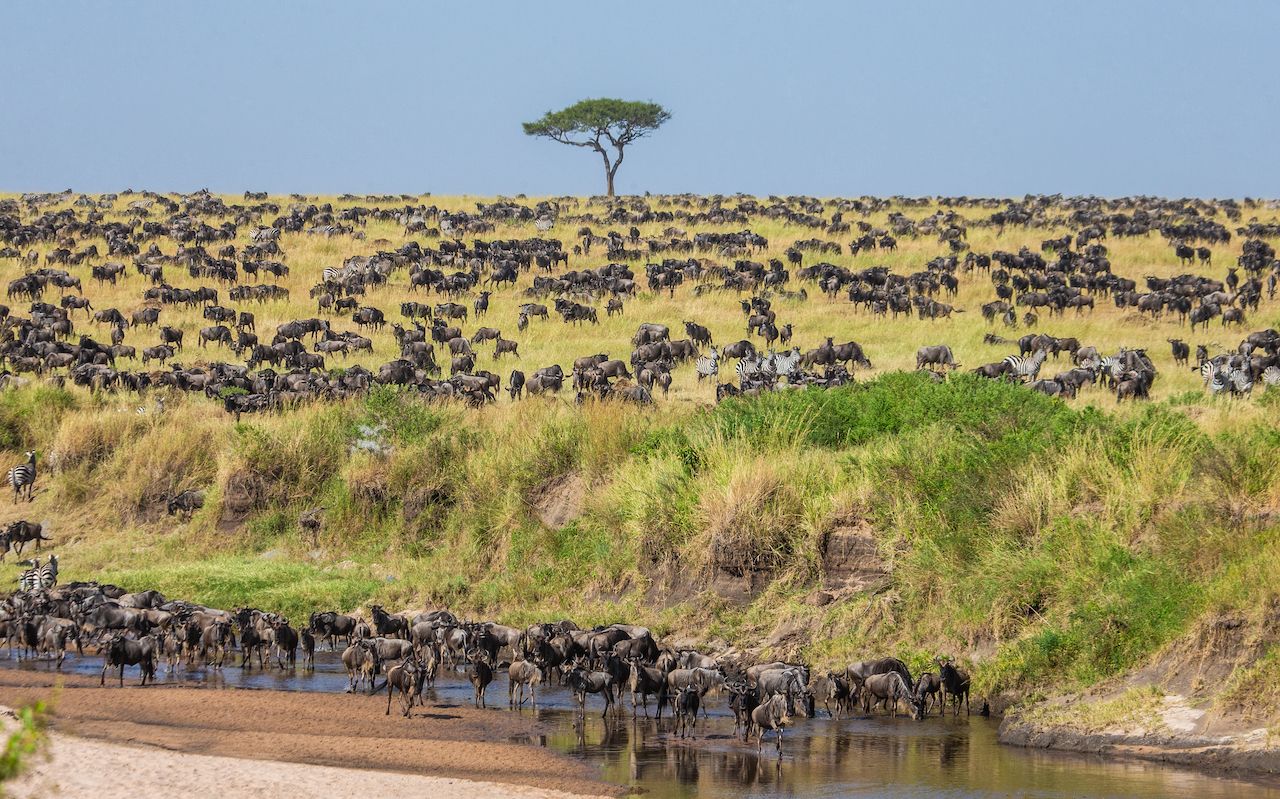
Photo: GUDKOV ANDREY/Shutterstock
Home to the Big Five, Kenya’s Maasai Mara National Reserve is one of the most popular safari destinations in the world and a must on any Kenyan itinerary. The Maasai Mara’s name originated with the Maasai people who referred to the area as “Mara,” which translates to “spotted.” With its expansive plains spotted with acacia trees, bushes, and animals, the name is fitting.
The Maasai Mara is a wildlife sanctuary that stretches over 583 square miles. With no fences between the neighboring wilderness of the Serengeti National Park in Tanzania, wildlife is able to roam free and uninhibited across borders. What’s also unique about the Maasai Mara is that it is not managed by Kenya’s wildlife services; instead, it is managed by local communities.
The Maasai Mara is an excellent year-round destination. However, it is in the months of late July to October that the drama-filled Great Migration takes place — the world’s largest migration of wildlife. Over two million animals, including wildebeest, zebra, eland, and Thomson gazelle, make the migration from Serengeti National Park to the Maasai Mara National Reserve. If you want to get a front-row seat to this majestic event, plan your trip to Kenya during that time.
Where to stay in Maasai Mara, Kenya: An upscale option
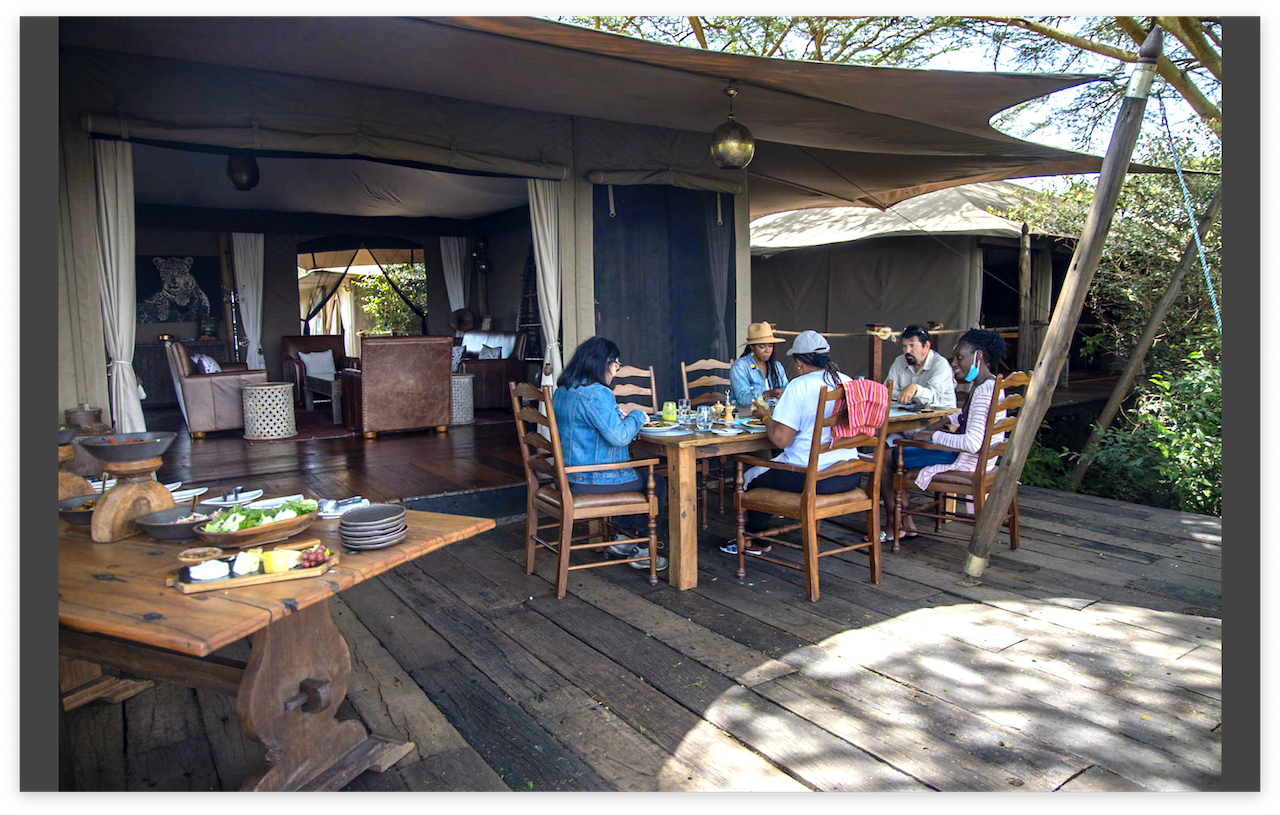
Wendy Hu
Suspended amidst Kenya’s iconic Acacia trees lies Mara Nyika, a new luxury tented camp from the Great Plains Conservation group. Mara Nyika, meaning “Large Plains or Great Plains” is located in the 50,000-acre, private, game-rich Naboisho Conservancy that borders the Maasai Mara. The camp consists of five luxury tents, two of which are two-bedroom, family-style tents. If you can afford it, Mara Nyika is ideal for travelers wanting exclusivity, a multigenerational family, or a honeymooning couple seeking adventure.
Inside the tents, artistic antiques and rustic wooden furniture add an air of opulence while simultaneously paying homage to the history and culture that runs deep in Kenya. For instance, the mirrors replicating traditional dhows, or the boats that ply the Indian Ocean, beaded coasters reminiscent of the beaded jewelry adorning the Maasai people, and the elaborate woodwork outfitting the space. Beyond the tents lie sprawling plains where the only neighbors you’re likely to see are grazing zebras and giraffes. You may even have a few visitors on your private patio, like monkeys and a variety of birds.
Mara Nyika is a luxury camp; however, it stays true to its ethos of sustainability and conservation. Each guest’s stay supports over 500 Maasai families and helps to ensure the conservation of the Maasai Mara ecosystem.
Best experiences in the Maasai Mara
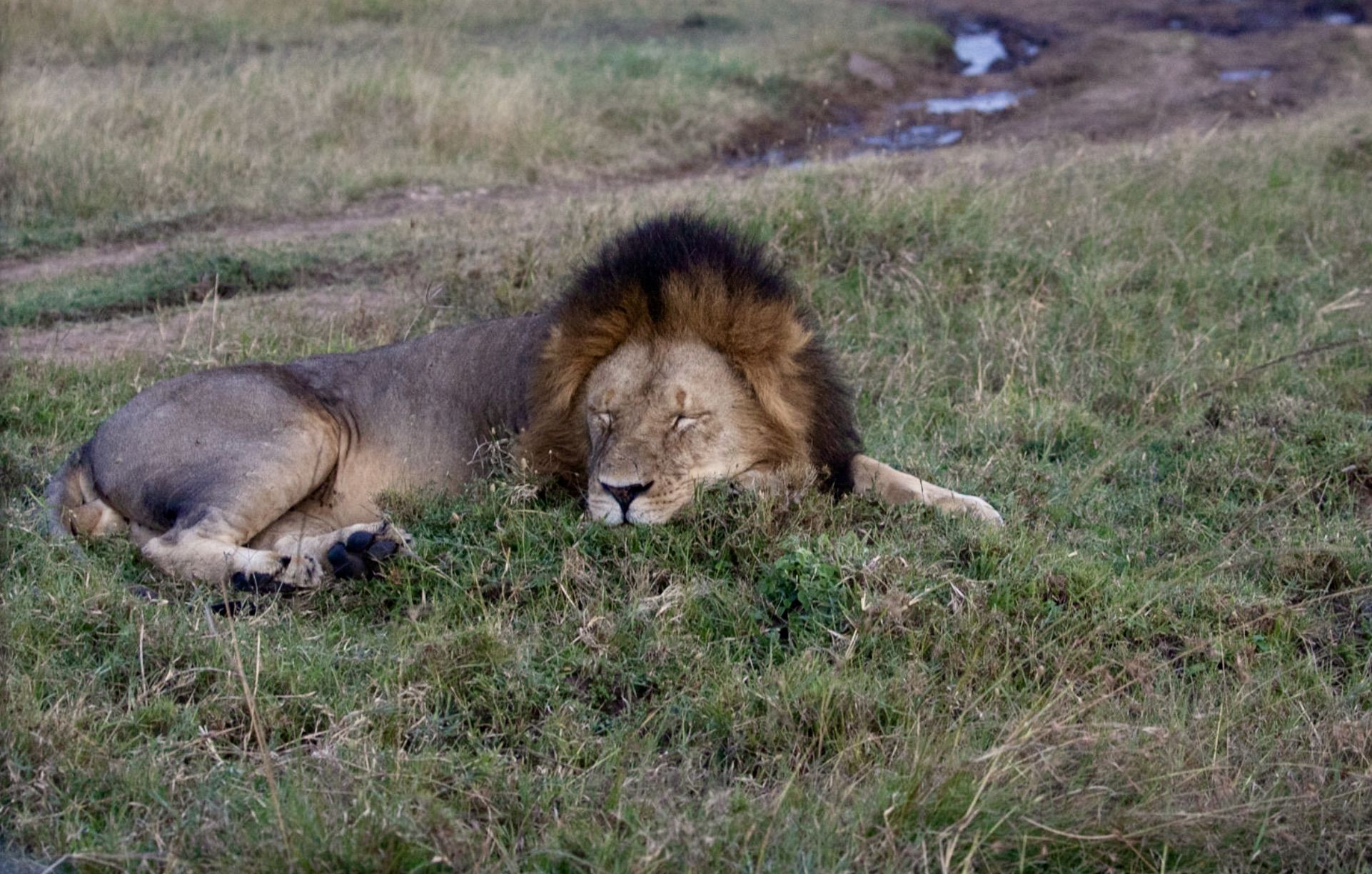
Wendy Hu
Most tented camps in the Maasai Mara will have early morning and night game drives on the agenda. The reserve is known for having the highest concentration of big cats such as lions, leopards, and cheetahs, and as the home of the Big Five, you’re almost guaranteed to spot buffalo, elephant, lion, and leopard on any given game drive. The elusive black rhinos are a bit harder to spot, but not impossible. You’ll also see your fair share of various species of antelope, zebra, hyena, giraffe, and more than 500 species of birds.
The Maasai Mara isn’t all “Big Five” and safaris. It is also culture and community that beckons to be explored. The Maasai, who migrated to this area from the Nile Basin centuries ago, are famed for being fierce warriors. The Maasai live a semi-nomadic lifestyle, continue to wear their brightly colored traditional shuka clothing and intricately beaded jewelry, and offer visitors unbridled hospitality. If they regale you with a dance, you’ll be stunned with their jumping skills. On a visit to a traditional village, you can experience the local life and rituals of the Maasai.
The perfect punctuation to an evening game drive is savoring a magical sunset in the Maasai Mara while enjoying light bites and sundowners, arranged by Mara Plains Camp. As the light fades to darkness, the bonfire will keep you warm under the crisp evening air, while the sounds of nature create an unforgettable experience.
Lamu
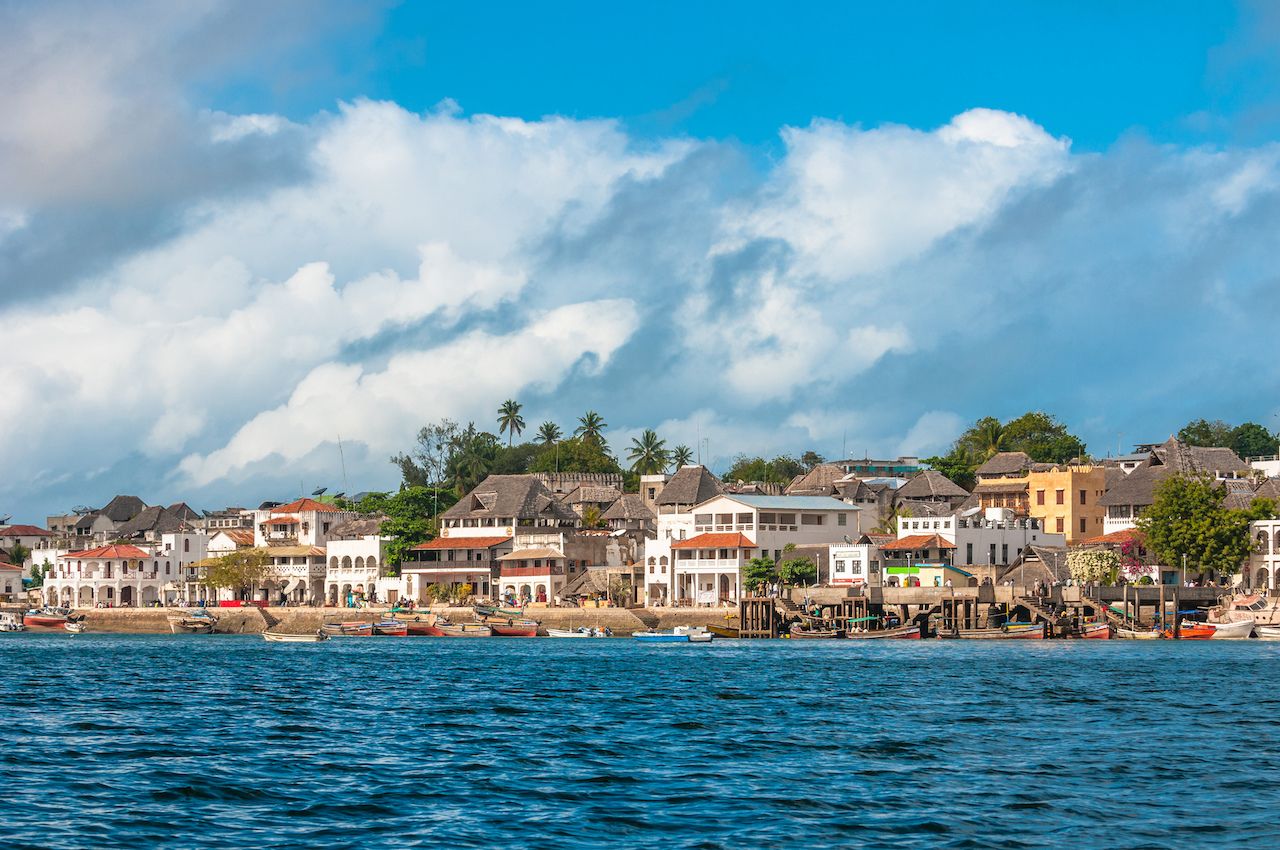
Photo: javarman/Shutterstock
Lamu is the epitome of the Swahili word pole pole. Slow down. A stark contrast to the frenetic energy of Nairobi and the adventures of the bush, Lamu is a place that forces you to slow down, breathe in, and enjoy the sweet moments between the moments. The Lamu archipelago is made up of over 65 islands in the Indian Ocean; however, the largest are Manda, Kiwayu, and the namesake Lamu Islands. Lamu Island was once the epicenter of trade, attracting Persians, Arabs, Indians, and Europeans. The eclectic mix of multicultural diversity that arose from that shows up everywhere and in everything from architecture and cuisine to culture and language.
You’ll see these remnants of the past as you meander through the labyrinth of narrow, winding streets where the shade of towering, whitewashed, coral stone buildings offers a cool reprieve from the heat. You won’t find any cars on these dusty roads; they are far too narrow. However, you will find yourself making way for the cargo-laden donkeys that transport goods around the island. Whereas once upon a time no motorized vehicles were allowed on Lamu Island, you’ll now find a few motorbikes zigzagging their way through the crowds of people and donkeys. Even so, this East African isle is a historic place that appears as though it has been frozen in time. Lamu Old Town is one of the most well-preserved towns in Kenya and was named a UNESCO World Heritage Site in 2001.
Where to stay in Lamu: Barefoot luxury

Wendy Hu
Just beyond the shores of Manda Island, tucked away amidst indigenous trees and fragrant flora, lies The Majlis, a barefoot luxury resort with idyllic views over the bay and Lamu Island. The Majlis is a beautiful fusion of Italian and Swahili designs. Gelato stands and bright pink-colored flowers snaking their way up the facades of the building will make you feel as though you’re on the coast of southern Italy; while ornate Swahili design work will remind you this is a Kenyan gem.
It’s a splurge, as the most basic rooms, which aren’t basic at all, start at over US$ 300 a night. Each of the 39 rooms has its own flair and personality, and the Majlis could easily double as an art exhibit. Intriguing sculptures, furniture made of breathtaking beadwork, and photographs that weave a delicate story of Kenya’s past and present will impress you as you wander through the three beachfront villas. With two ocean-front bars to savor sips at sundown and two swimming pools for refreshing dips from the Kenyan sun, relaxation won’t be hard to come by.
Lamu Experiences

Photo: Przemyslaw Skibinski/Shutterstock
One of the best things to do in Lamu is to explore the Old Swahili settlements. Peruse through the streets of Old Town for an experience of the senses: Smell the savory scents of delicious eats, while you listen to the sounds of hooves trotting along the dirt roads and deep belly laughs escaping from pals chatting in front of storefronts. As you walk the streets of Lamu, you’ll also admire the artistry, craftsmanship, and intricacy of the copious amounts of hand-carved mahogany doors. Pop into some of the local shops and watch the artisans at work, skillfully whittling away at slabs of wood.
While on the island, learn the history of Lamu and the Swahili culture at the Lamu Museum or visit the Lamu Fort — a fortress, turned prison, turned museum. Over 3,000 donkeys on the island are used as the main mode of transportation, which means they often need tending to and mending. Check out the Donkey Sanctuary and learn about its work. If that doesn’t placate the historian in you, make your way to Takwa, a settlement situated on the south side of Manda Island that was abandoned around the 18th century.
Head just two miles South of Lamu, via a five-minute boat ride or 45-minute walk, to Shela — a bohemian beach retreat that has become wildly popular with expats and A-list celebrities like Sting, Naomi Campbell, and Mick Jagger, because of its exclusivity. Shela Beach is a little more upscale and a lot quieter than Lamu. Also, you’ll find beachfront restaurants, like Peponi’s to enjoy sunsets and sundowners on Shela, unlike Lamu.
If you can tear yourself away from the blissful beaches, you’ll find the waters off Lamu offer up their own adventures. Set sail on a traditional dhow for an unforgettable sunset ride, or take a tour through the channels and mangroves of the Lamu Archipelago. You can enjoy a myriad of water sports; such as snorkeling and water skiing, and deep-sea fishing.